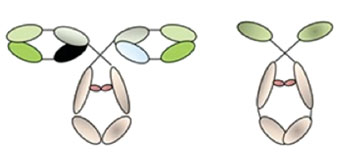Double Targeting Approach Increases Potential for Cancer Treatment with Oncolytic Viruses
By LabMedica International staff writers
Posted on 03 Mar 2015
Cancer researchers have used a double targeting approach to direct oncolytic viruses specifically to tumor cells where they reproduce until the cancer cells burst, releasing more viruses to infect and ultimately destroy the tumor.Posted on 03 Mar 2015
Investigators at the Washington University School of Medicine (St. Louis, MO, USA) modified an oncolytic adenovirus in two ways. At the transductional level, antibodies derived from camels or alpacas (camelids) against the tumor protein human carcinoembryonic antigen (CEA) were incorporated into the viral capsid. These antibodies enabled the virus to selectively infect cancer cells. At the transcriptional level, the gene for C-X-C chemokine receptor type 4 promoter was inserted into the viral genome. This gene would only be activated after successful infection of a cancer cell. The dual targeting mechanism was designed to insure that only cancer cells would be infected and destroyed.

Image: Typical antibodies (left) unfold in the harsh environment of the cell. Camelid antibodies (right) are smaller and more stable (Photo courtesy of the Washington University School of Medicine).
Typically, antibodies are composed of two immunoglobulin (Ig) heavy chains and two Ig light chains. Camelids are unique among mammals as they have fully functional antibodies with two heavy chains, but lack the light chains usually paired with each heavy chain. This feature of camelid antibodies prompted their use for viral targeting.
The potential of the modified adenovirus was evaluated with cancer cells growing in culture. The data, which was reported in the February 18, 2015, online edition of the journal Molecular Therapy—Oncolytics, demonstrated that the double targeting approach increased specificity of infection and efficacy of replication of the oncolytic adenovirus.
“For decades, investigators have been putting human or mouse antibodies on viruses, and they have not worked — the antibodies would lose their targeting ability,” said senior author Dr. David T. Curiel, professor of radiation oncology at the Washington University School of Medicine. “It was a technical problem. During replication, the virus is made in one part of the cell, and the antibody is made in another. To incorporate the two, the antibody is dragged through the internal fluid of the cell. This is a harsh environment for the antibodies, so they unfold and lose their targeting ability. We found that when we incorporated the camelid antibodies into the virus, they retained their binding specificity. This opens the door to targeting these antibodies to specific tumor markers.”
“We want this new level of targeting specificity because it would allow us to inject the virus into the bloodstream, where it would exclusively infect and replicate in tumor cells, even if they are disseminated throughout the body,” said Dr. Curiel. “These viruses are already engineered to replicate only in tumors. These camelid antibodies would enable them to become even more tumor-specific and open the door for use in metastatic cancer.”
Related Links:
Washington University School of Medicine














